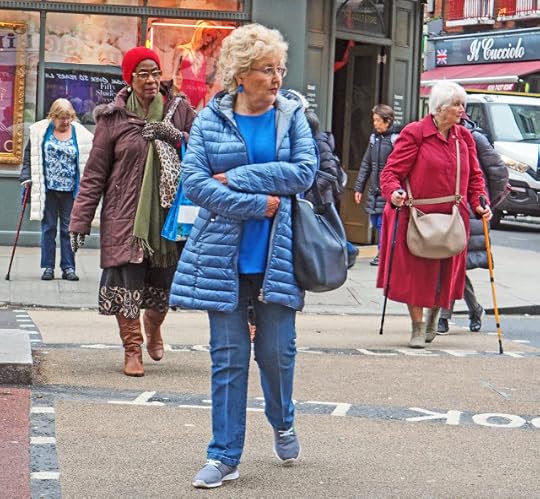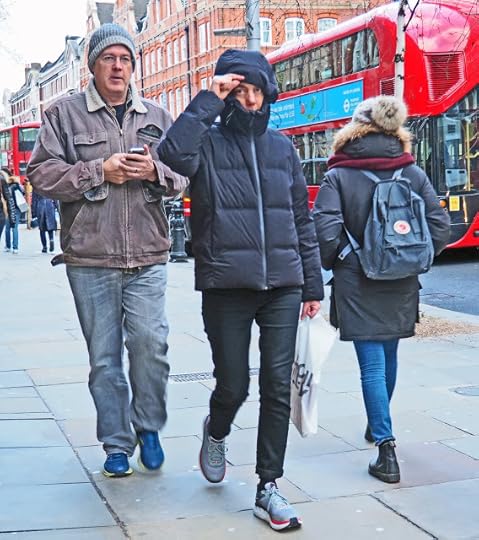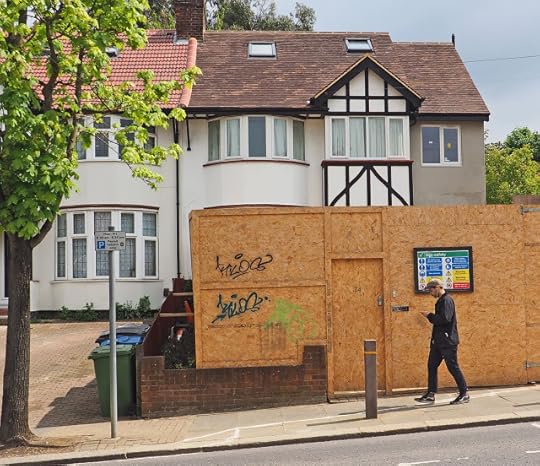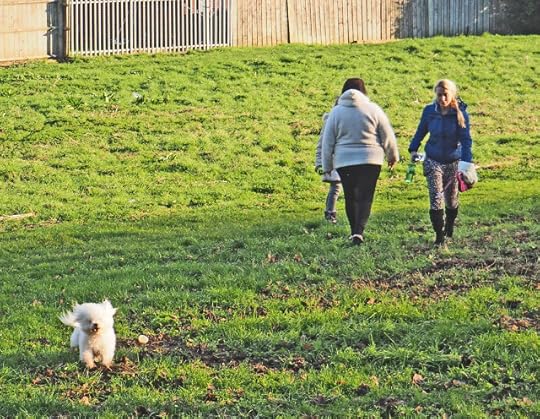Geoff Nicholson's Blog, page 29
June 19, 2019
CAGE WALKING (YOU KNOW, AS OPPOSED TO CAGE FIGHTING)
And another thing I did on my ‘holidays’ – I walked over to John Cage’s childhood home in Moss Avenue, Eagle Rock, in northwest LA. This may be Cage junior in the garden at that house, but don’t put money on it (I mean it's definitely John Cage, but it may not be the Eagle Rock house.

Cage’s dad, also named John Cage, built the house from scratch, which may seem surprising at first, but given that he was an inventor and built his own submarine, less so. A guy who can build his own submarine can probably build his own house.
I went with my psychogeographic pal Anthony Miller – that’s him about to trespass and transgress, while also showing his bald spot.
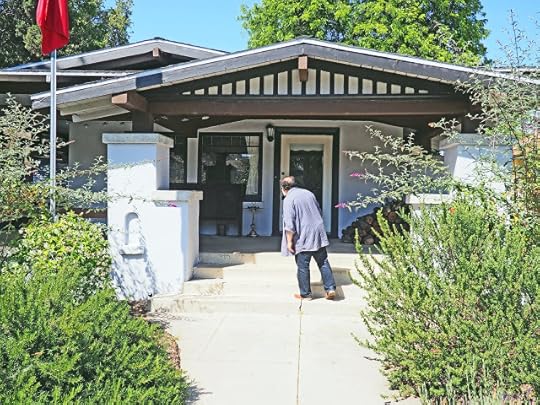
There was nobody home as far as we could tell, despite multiple cars in the driveway including this white, left hand drive Morris Minor. How many of those were sold in America? That's not an entirely rhetorical question.
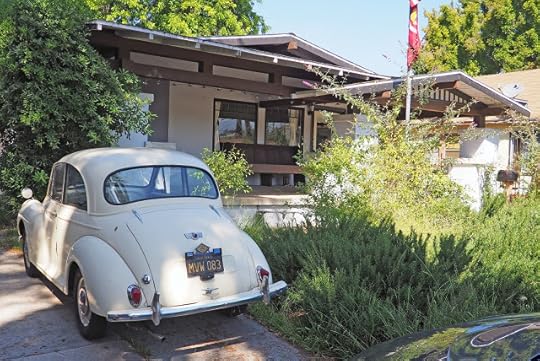
Then we pottered around the neighbourhood, saw euphorbias springing up adjacent to the sidewalk,
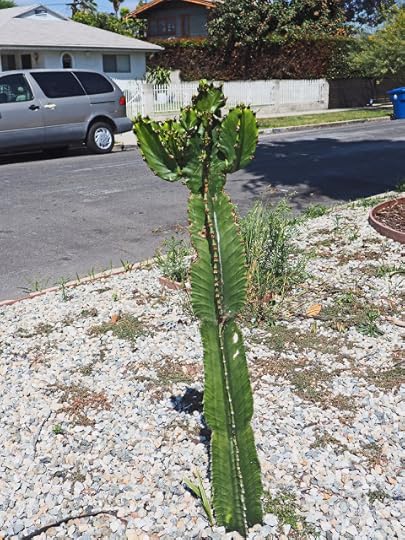
a wayside mini-library,
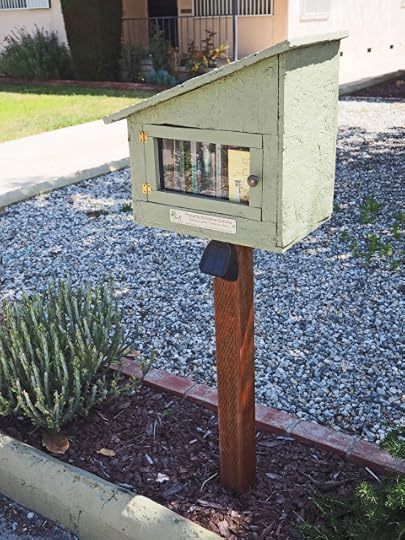
some very trim trees,

and some stuffed monkeys tied to other trees:
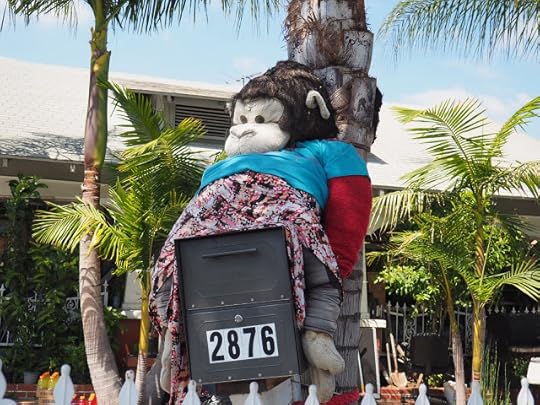
Later, rereading Cage’s Indeterminacy, which strikes me as one of the truly great twentieth century texts, I rediscovered a couple of pieces that involve walking; this one:
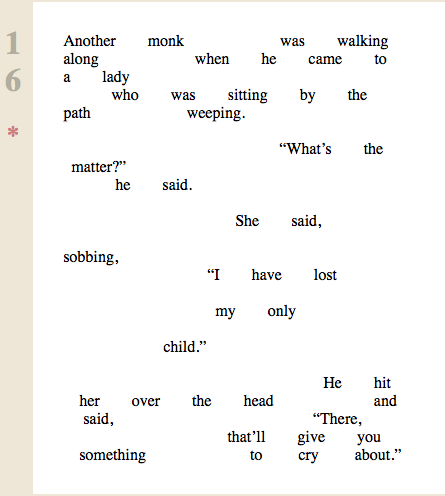
That’s a bit rough, even for my robust sensibilities, but this one, I really, really like:
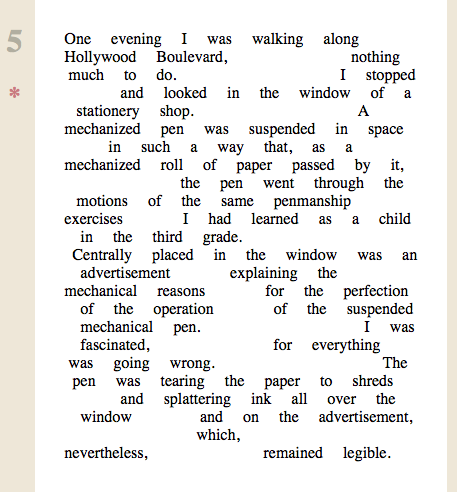
Actually the idea that John Cage might be walking along Hollywood Boulevard, or anywhere else, with 'nothing much to do' is the real surprise.

Cage’s dad, also named John Cage, built the house from scratch, which may seem surprising at first, but given that he was an inventor and built his own submarine, less so. A guy who can build his own submarine can probably build his own house.
I went with my psychogeographic pal Anthony Miller – that’s him about to trespass and transgress, while also showing his bald spot.

There was nobody home as far as we could tell, despite multiple cars in the driveway including this white, left hand drive Morris Minor. How many of those were sold in America? That's not an entirely rhetorical question.

Then we pottered around the neighbourhood, saw euphorbias springing up adjacent to the sidewalk,

a wayside mini-library,

some very trim trees,

and some stuffed monkeys tied to other trees:

Later, rereading Cage’s Indeterminacy, which strikes me as one of the truly great twentieth century texts, I rediscovered a couple of pieces that involve walking; this one:

That’s a bit rough, even for my robust sensibilities, but this one, I really, really like:

Actually the idea that John Cage might be walking along Hollywood Boulevard, or anywhere else, with 'nothing much to do' is the real surprise.

Published on June 19, 2019 13:38
June 18, 2019
HOUSEHOLD WALKING
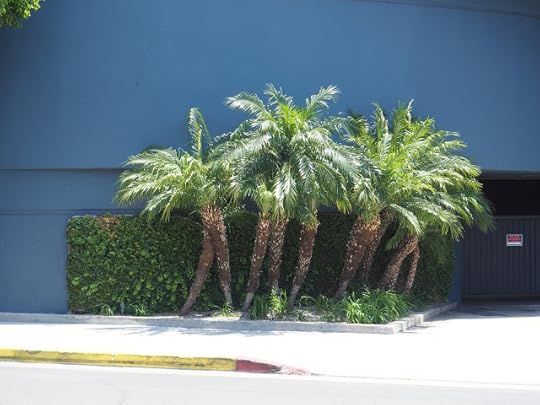 Yes, I walked when I was in Los Angeles last month, of course I did. It’s what I do wherever I am. And despite urban myths to the contrary I saw plenty of other people walking too. Like these good folks on Hollywood Boulevard:
Yes, I walked when I was in Los Angeles last month, of course I did. It’s what I do wherever I am. And despite urban myths to the contrary I saw plenty of other people walking too. Like these good folks on Hollywood Boulevard:

And I went to Palm Springs and saw people walking there too.

And also in Yucca Valley.

And right at the very end, on my last day, I was walking in Little Tokyo in LA, and I wasn’t trying to have one of those ‘perfect moments’ to round off the trip, and I hadn’t even been thinking much about obelisks, I certainly hadn’t seen any on my trip, but then I hadn’t really expected to, and yet and yet .. there I was on East Second Street and suddenly this mighty metal obelisk loomed out at me.
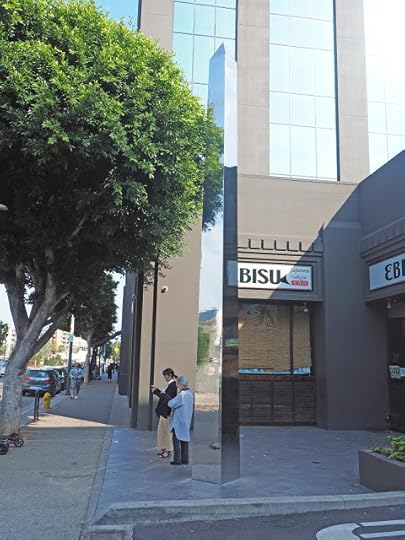
My first thought was that it could be a decorative element for the nearby Japanese restaurant but it seemed a bit grand for that. A basic online search didn’t bring up anything and I told myself that was OK. Sometimes it’s good for a walk and an obelisk to retain a certain mystery.
But back home further searching revealed that it’s a work of art (as to some degree are all obelisks, I suppose) but this one is called Sliver Tower and it’s by the artisy Peter Lodato, from his "Wrathful Means" series which apparently “depicts the power and ferocity of Mahakala, the protector of Lamism,” though I don’t see how you’d know that from looking at the obelisk
But … and hold onto your hat kids, you know what’s on the wall of my living room, a thing that I bought on a whim in all ignorance from the local junk/antique shop – yep it’s a mask of Mahakala.
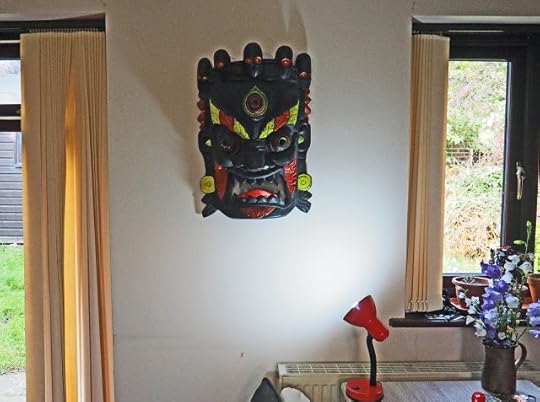
Spooky? Nah, just the kind of stuff that happens all the time. In Japan, I understand, Mahakala is a protective household god. I can really use one of those.

Published on June 18, 2019 02:54
June 11, 2019
TOO MUCH TIME, WITH AND WITHOUT THE CAPTAIN

Suffering from insomnia, and not wanting to become entirely Ambien-dependent, I found myself between 3 and 5 am the other morning reading Mike Barnes’s biography Captain Beefheart. It did not put me to sleep.
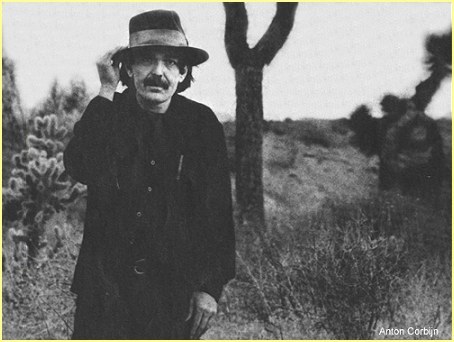
Now, as we know, tales of Don Van Vliet as a desert rat are often exaggerated, but in the book I found references to a promotional interview Beefheart did with one Meatball Fulton in which Beefheart takes about being a ‘trangent’ (his own invented word as far as I can tell), about bunking off school and going out walking in the desert with the trangents outside Lancaster in the Mojave desert. He explains, ‘Well, what’s a “trangent,” do you know what I mean? Someone who likes to go for a walk farther than somebody who is a resident.’
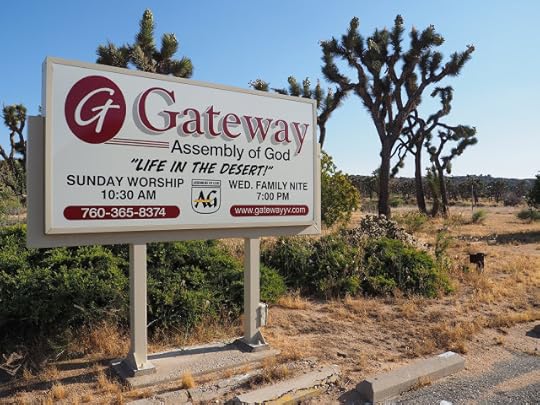
Well, I’m certainly no resident of the Mojave desert but I do go there once in a while, and the week before last I was walking there, not really all that far, in the scrubby parts outside Yucca Valley, and not in the company of anyone else, trangent or not, but I definitely walked farther than some, in the sense that I didn’t see anybody else while I was walking.
In some ways, you don’t have to go all that far to find a “Clear Spot” in the desert but I suppose it all depends on your definition of clear, and in any case that wonderful Beefheart song with its mentions of “Sleepin' in a bayou on a old rotten cot” obviously isn’t referring to the desert at all. Still, for some of us, when we walk in the desert, the Captain is always with us in spirit.
The notion of the pristine or virgin or clear desert is always problematic. Much of the American desert is under the protection of the Bureau of Land Management or part of a National Park, which is a fine thing, but there’s nothing strictly natural about that. Otherwise much of the desert belongs to private individuals who may not do anything with it, but that doesn’t keep it looking pristine or even good, let alone clear.
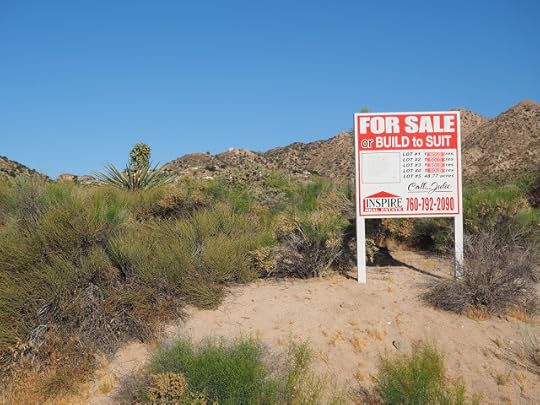
Obviously houses get built in the desert, more and more of them, and sometimes houses get burned to the ground.
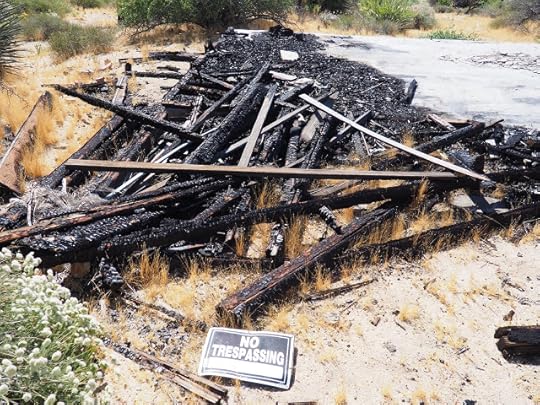
And there’s a whole category of people who think of the desert as a non-place (and we don’t need to get all French and philosophical about this, though we certainly could), or perhaps they think of it as a place that doesn’t matter, as a place where you can shoot your guns and dump your furniture. Like this:

Clarity comes in many different forms. Here are some people who, one way or another, have found their own clear spots.
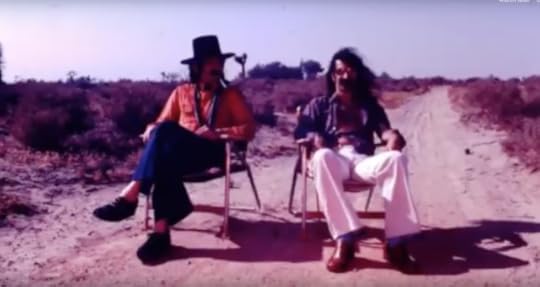
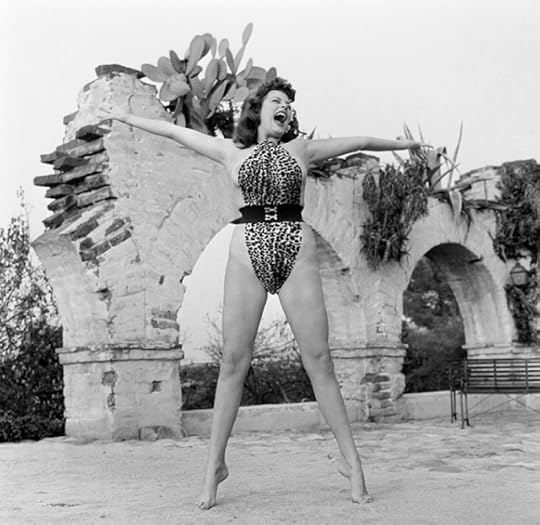
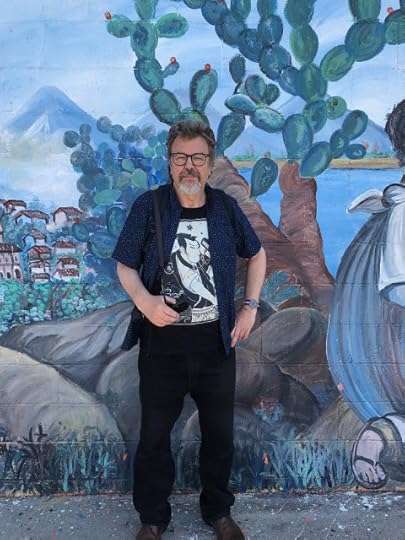

Published on June 11, 2019 00:28
May 21, 2019
DESIRE CAUGHT BY THE TRAIL
You know me and I know you. And we all like trails and we all like desire. Which is why we like desire trails. OK, sometimes they’re called desire lines, but that’s far less sexy, and let’s face it, these things are trails not lines. And sometimes they get called desire paths.
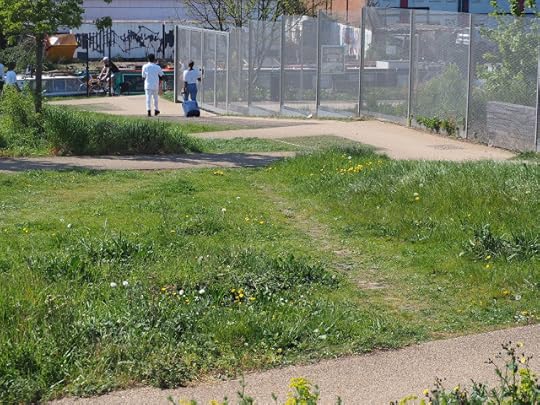
There was an article in the Guardian last year titled ‘Desire paths: the illicit trails that defy the urban planners. To which one can only say “Illicit? Oh, please.”
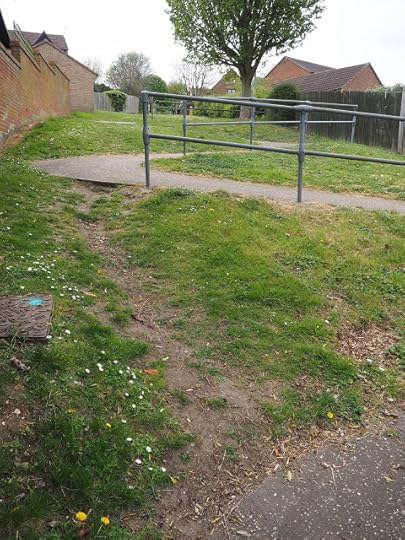
The article contained a link to an academic paper from the University of Wollongong (you may make up your own joke here) which contained this fabulous bit of prose: ‘The theme of grounded practice returns in a very different way in Nathalie Casemajor Loustau and Heather Davis’ discussion of their project – “Ouvert/Open: Common Utopias”. Expanding out from a particular and local phenomenon of urban life in Montreal where desire lines record collective disobedience.” To which one might say, ‘Oh, double please.’

Anyway, above and below are some desire trails/paths/lines I walked recently. Me, I’m just SO illicit and disobedient. And OK, I'm not sure that the one below really counts, it's a top quality trail in any case:
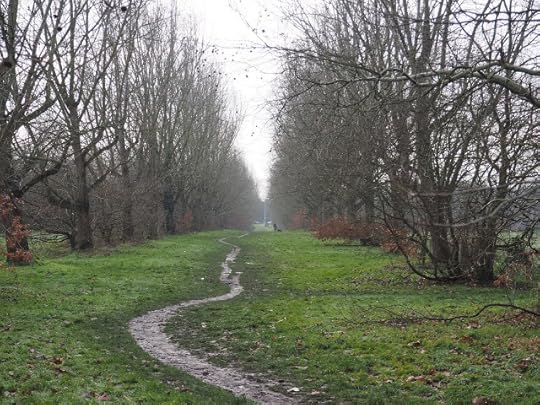


There was an article in the Guardian last year titled ‘Desire paths: the illicit trails that defy the urban planners. To which one can only say “Illicit? Oh, please.”

The article contained a link to an academic paper from the University of Wollongong (you may make up your own joke here) which contained this fabulous bit of prose: ‘The theme of grounded practice returns in a very different way in Nathalie Casemajor Loustau and Heather Davis’ discussion of their project – “Ouvert/Open: Common Utopias”. Expanding out from a particular and local phenomenon of urban life in Montreal where desire lines record collective disobedience.” To which one might say, ‘Oh, double please.’

Anyway, above and below are some desire trails/paths/lines I walked recently. Me, I’m just SO illicit and disobedient. And OK, I'm not sure that the one below really counts, it's a top quality trail in any case:


Published on May 21, 2019 12:39
May 13, 2019
TOOPOGRAPHICA
I’ve been reading David Toop’s memoir Flutter Echo: Living Within Sound.
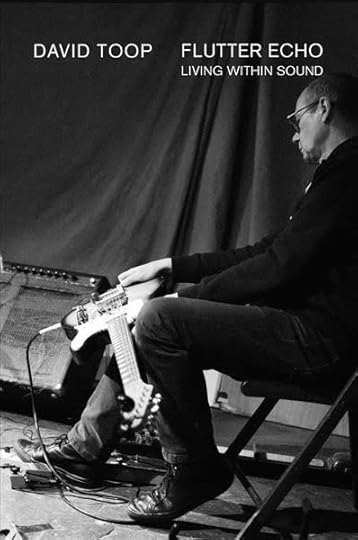
It turns out he’s a bit of a walker. In fact that title comes from walking. He writes, “My first memory of a listening experience comes from a walk, a regular journey during my early childhood.” He used to visit his grandparents, “we would take the bus from Waltham Cross to Enfield, then walk from the centre of the town to their house in Bush Hill Park …”
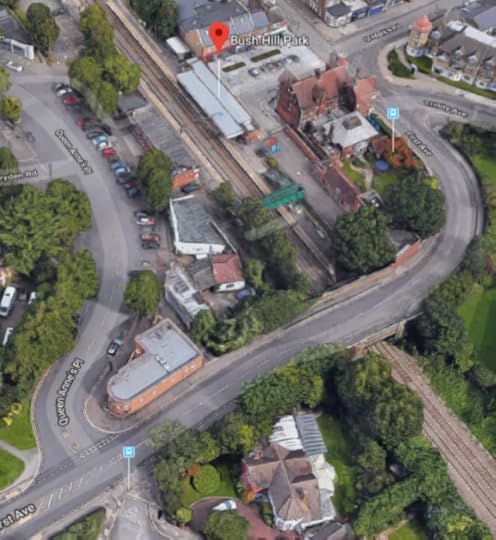
"Shortly before the railway bridge that took us over the tracks into my grandparents’ road the path was bordered on both sides by a concrete wall. The narrowness of this path meant that the walls reflected echoes from our footsteps very rapidly, an effect described as flutter echo by acousticians. Like the fluttering of a moth’s wings, sound bounces back and forth between the two parallel walls to create a ‘zing’.”
Later he lived with the artist Marie Yates, and together they did “Field Workings,” described by Toop as “walking and working from within the self and under the sky, deeply private even though conducted on open land and documented.” She made environmental sculptures, he made recordings, one of which consisted of “hanging my microphone on a wire fence, then walking away as I played sounds that were snatched from me by the wind …”. This an image from one of Yates's pieces.
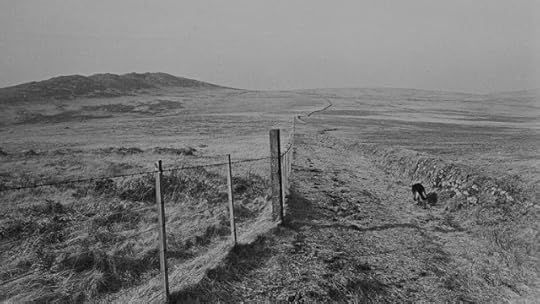
Also, from his days as a (for want of two better words) music journalist there’s an article on the Artangel website about walking and art and sound related to Francis Alÿs, Seven Walks (2005), though he references quite a few other walking artists too.He quotes Alÿs as saying, “I think it’s a natural state for somebody who’s interested in cities or architecture in general to walk. Walking offers a very convenient space for things to happen, and it allows a certain awareness in between an ongoing chain of thoughts and a series of incidental informations around, glimpses of scenes, sounds, smells, etc…” This is an annotated map for one of Alÿs’s walks, titled, Guards.
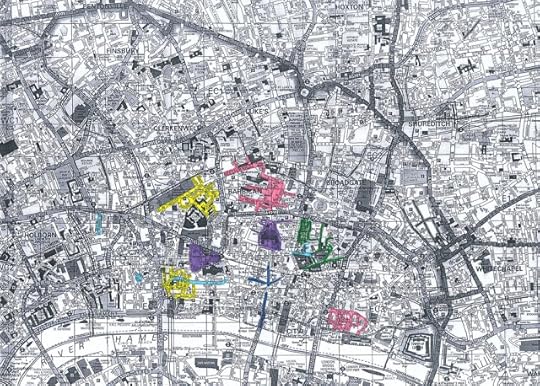
Toop says, in his own write, “Urban space is divided up according to ideas of visual drama, social connectivity, and the pragmatics of movement, yet sound is taken for granted, forgotten, or ignored despite its vital role as an element in urban design. Sound is not reducible to a text, so not susceptible to ‘reading’.” I like that.
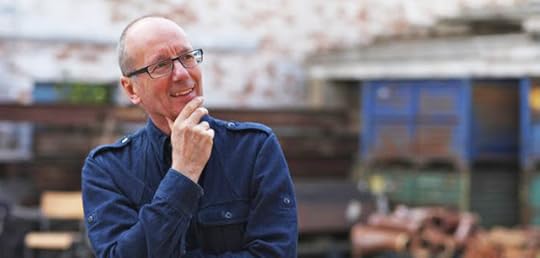


It turns out he’s a bit of a walker. In fact that title comes from walking. He writes, “My first memory of a listening experience comes from a walk, a regular journey during my early childhood.” He used to visit his grandparents, “we would take the bus from Waltham Cross to Enfield, then walk from the centre of the town to their house in Bush Hill Park …”

"Shortly before the railway bridge that took us over the tracks into my grandparents’ road the path was bordered on both sides by a concrete wall. The narrowness of this path meant that the walls reflected echoes from our footsteps very rapidly, an effect described as flutter echo by acousticians. Like the fluttering of a moth’s wings, sound bounces back and forth between the two parallel walls to create a ‘zing’.”
Later he lived with the artist Marie Yates, and together they did “Field Workings,” described by Toop as “walking and working from within the self and under the sky, deeply private even though conducted on open land and documented.” She made environmental sculptures, he made recordings, one of which consisted of “hanging my microphone on a wire fence, then walking away as I played sounds that were snatched from me by the wind …”. This an image from one of Yates's pieces.

Also, from his days as a (for want of two better words) music journalist there’s an article on the Artangel website about walking and art and sound related to Francis Alÿs, Seven Walks (2005), though he references quite a few other walking artists too.He quotes Alÿs as saying, “I think it’s a natural state for somebody who’s interested in cities or architecture in general to walk. Walking offers a very convenient space for things to happen, and it allows a certain awareness in between an ongoing chain of thoughts and a series of incidental informations around, glimpses of scenes, sounds, smells, etc…” This is an annotated map for one of Alÿs’s walks, titled, Guards.

Toop says, in his own write, “Urban space is divided up according to ideas of visual drama, social connectivity, and the pragmatics of movement, yet sound is taken for granted, forgotten, or ignored despite its vital role as an element in urban design. Sound is not reducible to a text, so not susceptible to ‘reading’.” I like that.


Published on May 13, 2019 10:51
May 6, 2019
SOME WALKERS WALKING
Published on May 06, 2019 05:54
May 4, 2019
CHELSEA MOURNING
Well, my billeting in Chelsea is about to come to an end.
It’s been a good time, and of course I make friends wherever I go, but I never got over the feeling that I wasn’t quite Chelsea material. Few are.
When I arrived there was a place nearby in Kings Road called the Diva Café – it has now become Bye Bye London.
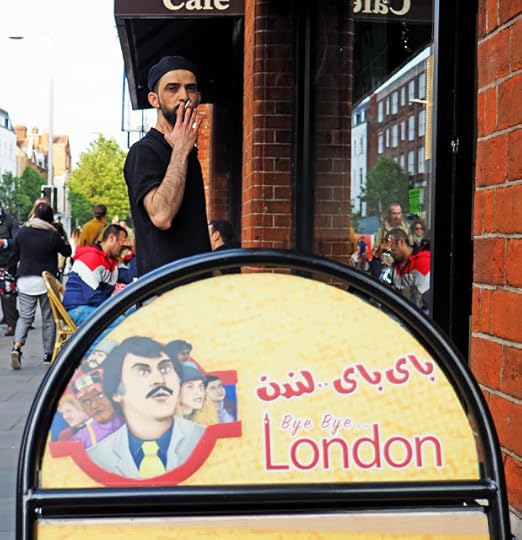
I haven’t been in there since the change of name. As you may guess from the sign, it’s an Arabic restaurant, specifically Kuwaiti, and I don’t quite understand what the man on the sign looks so cross about.
Meanwhile a little way up Kings Road there’s shop called London Bonjour, selling 'eyewear' (kids, that's what we used to call glasses!) and I’ve never been in there either but the name does seem a little more welcoming.

And here are one or two other sights I've seen while wandering around Chelsea.
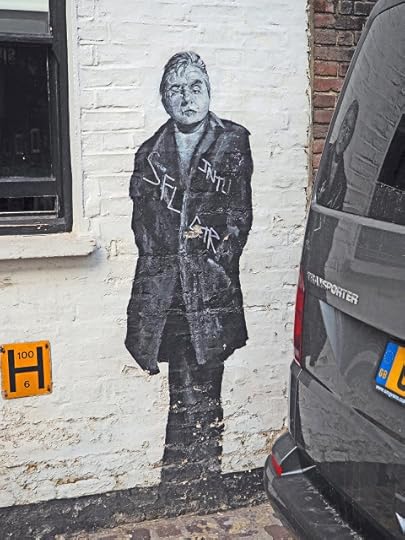
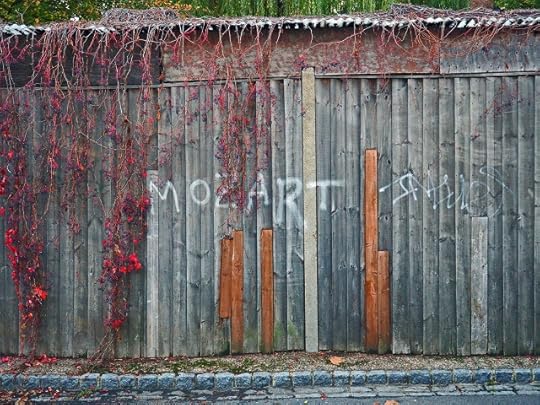
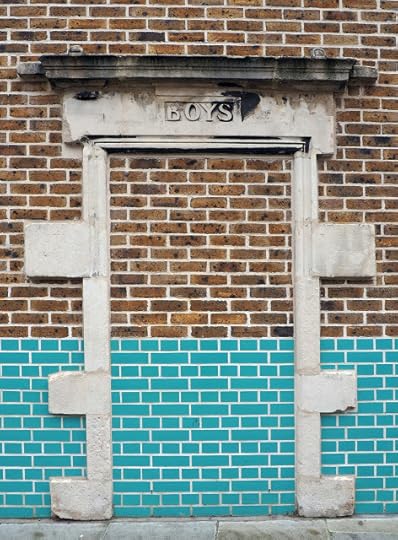
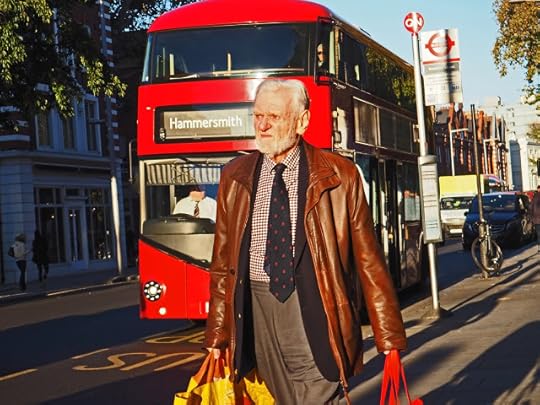

It’s been a good time, and of course I make friends wherever I go, but I never got over the feeling that I wasn’t quite Chelsea material. Few are.
When I arrived there was a place nearby in Kings Road called the Diva Café – it has now become Bye Bye London.

I haven’t been in there since the change of name. As you may guess from the sign, it’s an Arabic restaurant, specifically Kuwaiti, and I don’t quite understand what the man on the sign looks so cross about.
Meanwhile a little way up Kings Road there’s shop called London Bonjour, selling 'eyewear' (kids, that's what we used to call glasses!) and I’ve never been in there either but the name does seem a little more welcoming.

And here are one or two other sights I've seen while wandering around Chelsea.





Published on May 04, 2019 01:26
April 28, 2019
AT WAR WITH THE OBLIVIOUS
Sometimes an urban drift really doesn’t have to be all that dramatic. Yesterday’s went from Green Park to Oxford Circus, which neither I nor anybody else would think of as prime drifting territory, but it had its moments.
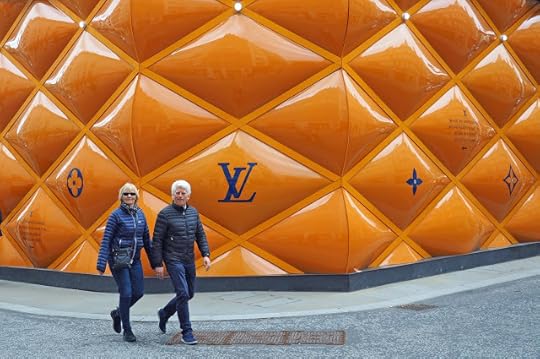
First stop, and in fact most of the reason for the trip, was the William Eggleston exhibition at the David Zwirner gallery.
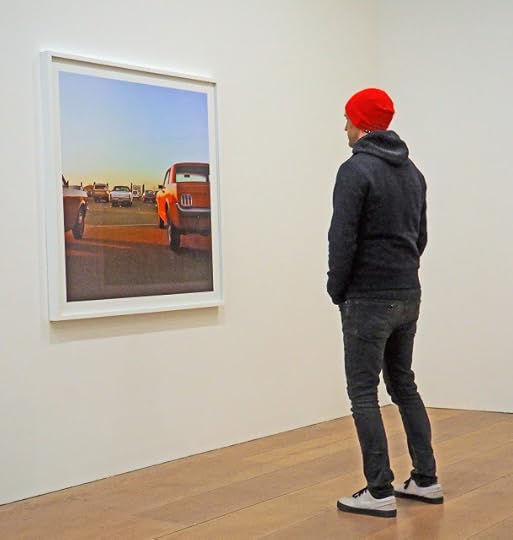
It was great: a smallish show of big pictures, and it was truly wonderful. In general I’m all for exhibitions that take place in unconventional and alternative spaces, but sometimes you go into a white, bright, high-ceilinged space and you understand why some galleries choose to be that way.
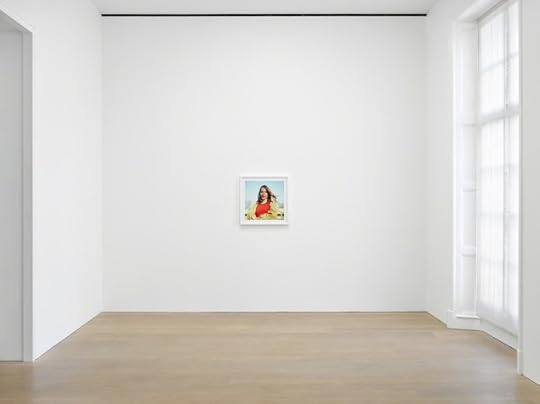 Picture from David Zwirner Gallery.
Picture from David Zwirner Gallery.
Next, up behind Oxford Circus, it was time to new, and perhaps last, look at the Welbeck Street multistory car park which used to look like this:
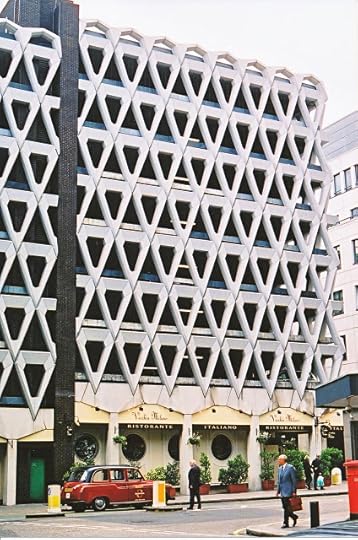
but now looks like this:
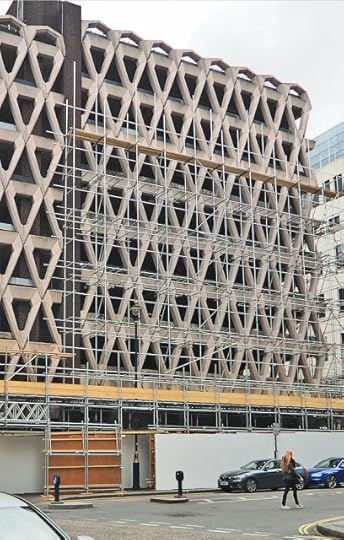
and will soon look like nothing at all, as it’s about to be demolished.Oxford Circus, of course, was recently one of the scenes of the Extinction Rebellion protest, which I walked past, or through, a couple of times, and it all seemed fairly good humoured, and there was no problem getting in and out of the tube station, but we know not everybody saw it that way.
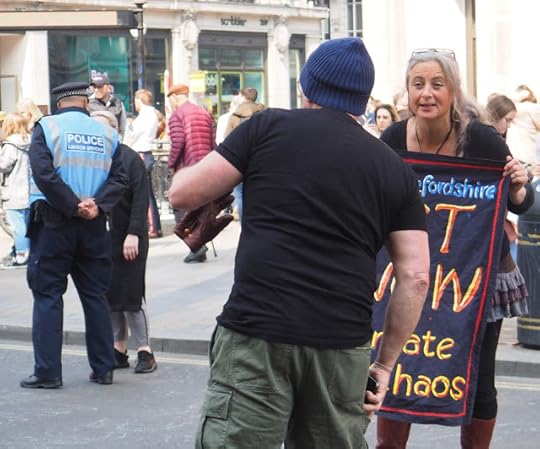
Although there were many complaints about the real or imagined middle-classness of the protesters, I didn’t see anybody objecting on the grounds that it was “too white.“ Maybe middle-class is synonymous with whiteness. On the other hand there were these two who were slapping on the white face:
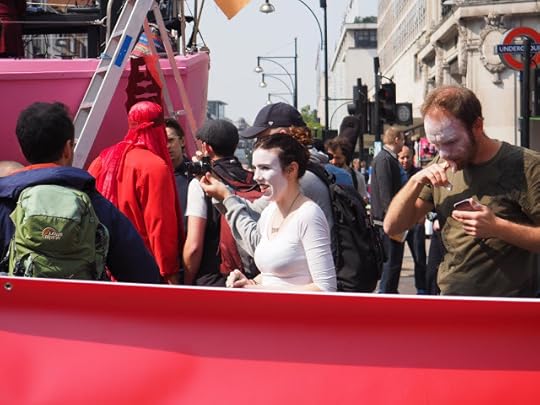
and there was this guy, who carried his whiteness with a twist:



First stop, and in fact most of the reason for the trip, was the William Eggleston exhibition at the David Zwirner gallery.

It was great: a smallish show of big pictures, and it was truly wonderful. In general I’m all for exhibitions that take place in unconventional and alternative spaces, but sometimes you go into a white, bright, high-ceilinged space and you understand why some galleries choose to be that way.
 Picture from David Zwirner Gallery.
Picture from David Zwirner Gallery.Next, up behind Oxford Circus, it was time to new, and perhaps last, look at the Welbeck Street multistory car park which used to look like this:

but now looks like this:

and will soon look like nothing at all, as it’s about to be demolished.Oxford Circus, of course, was recently one of the scenes of the Extinction Rebellion protest, which I walked past, or through, a couple of times, and it all seemed fairly good humoured, and there was no problem getting in and out of the tube station, but we know not everybody saw it that way.

Although there were many complaints about the real or imagined middle-classness of the protesters, I didn’t see anybody objecting on the grounds that it was “too white.“ Maybe middle-class is synonymous with whiteness. On the other hand there were these two who were slapping on the white face:

and there was this guy, who carried his whiteness with a twist:


Published on April 28, 2019 10:52
April 25, 2019
WHO'S AFRAID OF JANET SUSAN MARY HOFFMAN?
You know, for all that Andy Warhol is embraced as a ‘gay icon’ (not my words but plenty of other people’s), it was the women in Warhol’s films that first really grabbed my attention.

Mary Woronov, Edie Sedgwick, Ultra Violet, Nico. They looked fabulous, like nobody I’d ever met, and of course I knew that in the real world they’d never give me the time of day, but then a lot of the women I met wouldn’t give me the time of day in any case. Better to be rejected by a superstar than some girl from the high school.

So yes, watching Warhol’s films, I could just about put up with the antics of Ondine, Taylor Mead et al, as long as Viva (nee Janet Susan Mary Hoffman) popped up once in a while, generally without many clothes on.

Now, I would never have thought of Viva as much of a walker, so imagine my surprise delight when I came across this 1975 interview she did for Interview magazine:
BOB: What’s your life like in California?VIVA: We live in a mountain cabin with no central heating. While Michel saws wood, i’m writing books for five hours a day. And then we take a drive to the coast to watch the whales migrate and the pelicans. So I’ve had a completely domestic life. A Virginia Woolf life. You seem to be getting bored already.BOB: No. I’m just listening.VIVA: And Virginia said to write good literature, you have to read good literature and take long walks. So I began writing at 9:30 in the morning with a bottle of Jack Daniels and when the tip of my tongue got numb around two, I quit. Michel took Alexandra [Viva’s child] to school and finished sawing wood for the fireplace. This is after living in a trailer with no windows, a 30s trailer, you know, that costs a million dollars today, full of inlaid wood, with Alexandra sleeping on a table…BOB: But…VIVA: … in the rain, in the mud, typing on a battery-operated typewriter, outside the trailer, in the mud – alright we finally got into a house. So I was living like Virginia Woolf, taking long walks through the mountains, reading Proust and writing.

If I never imagined Viva as a walker, even less did I imagine her as a fellow traveler with Virginia Woolf. Walking creates some strange bedfellows.
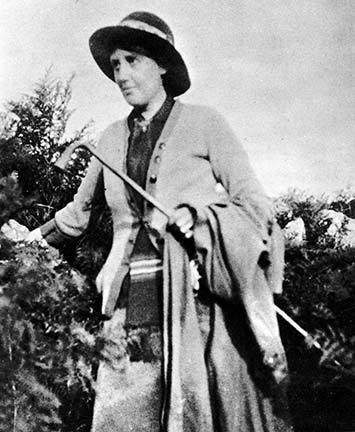


Mary Woronov, Edie Sedgwick, Ultra Violet, Nico. They looked fabulous, like nobody I’d ever met, and of course I knew that in the real world they’d never give me the time of day, but then a lot of the women I met wouldn’t give me the time of day in any case. Better to be rejected by a superstar than some girl from the high school.

So yes, watching Warhol’s films, I could just about put up with the antics of Ondine, Taylor Mead et al, as long as Viva (nee Janet Susan Mary Hoffman) popped up once in a while, generally without many clothes on.

Now, I would never have thought of Viva as much of a walker, so imagine my surprise delight when I came across this 1975 interview she did for Interview magazine:
BOB: What’s your life like in California?VIVA: We live in a mountain cabin with no central heating. While Michel saws wood, i’m writing books for five hours a day. And then we take a drive to the coast to watch the whales migrate and the pelicans. So I’ve had a completely domestic life. A Virginia Woolf life. You seem to be getting bored already.BOB: No. I’m just listening.VIVA: And Virginia said to write good literature, you have to read good literature and take long walks. So I began writing at 9:30 in the morning with a bottle of Jack Daniels and when the tip of my tongue got numb around two, I quit. Michel took Alexandra [Viva’s child] to school and finished sawing wood for the fireplace. This is after living in a trailer with no windows, a 30s trailer, you know, that costs a million dollars today, full of inlaid wood, with Alexandra sleeping on a table…BOB: But…VIVA: … in the rain, in the mud, typing on a battery-operated typewriter, outside the trailer, in the mud – alright we finally got into a house. So I was living like Virginia Woolf, taking long walks through the mountains, reading Proust and writing.

If I never imagined Viva as a walker, even less did I imagine her as a fellow traveler with Virginia Woolf. Walking creates some strange bedfellows.


Published on April 25, 2019 06:24
April 16, 2019
MODESTY FORBIDS, VANITY COMPELS
My pal and fellow writer David Belbin was staying in the INK hotel in Amsterdam, which describes itself as – “a bohemian lifestyle hotel where the traditional rules of hospitality are freely translated to the modern day, writing a contemporary story in INK.” There in the room, David tells me, perhaps in all the rooms, was a copy of the Soft Atlas of Amsterdam by Jan Rothuizen, a book of hand drawn, very personal, annotated maps of the city, though also usable (I imagine) for getting around.

Not only that, the walls had wallpaper based on drawings from the book. As an occasional map obsessive this sounds like a fine idea to me. What could make it finer? Why the appearance of Nicholson. I'm not absolutely sure if I'm on the walls, but definitely in the book. Rothuizen bought a copy of my Lost Art of Walking - it says so!!
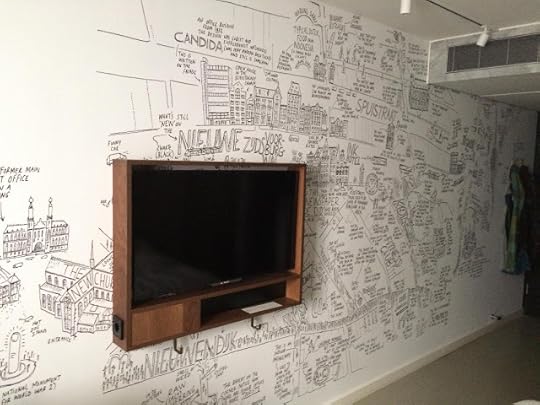
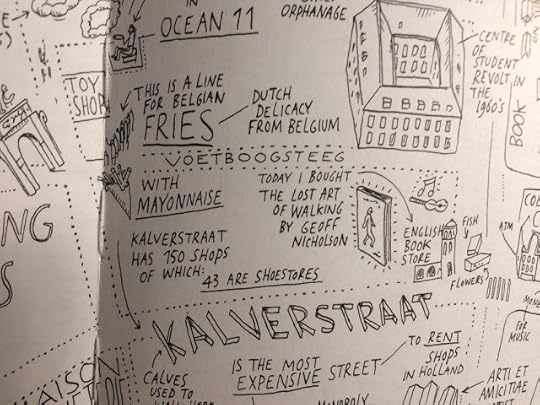
I can hardly tell you how chuffed I am by this. Writers are simple creatures. We toil in melancholy darkness, and very small things can sometimes make us very happy, and this is absolutely one of them. Thanks to David and to the hotel, and even more to Jan Rothuizen.
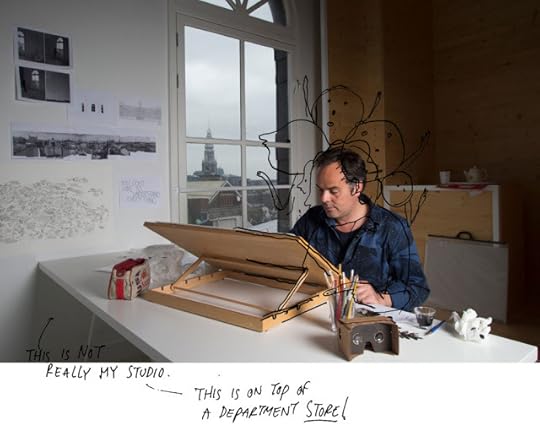
Naturally I did some research. Rothuizen is everywhere, not only in Amsterdam, Tokyo, Colombia, drawing, map-making and walking, but also in London where he had a rat thrown at him. I know this after watching a TED talk he did (available online) in which he talks about walking in New York, “This has to do with the hierarchy of information like I would see things, think about memories, I would hear songs, there were a lot of different things going on at the same time and I thought this was very worthwhile but also very rich.”
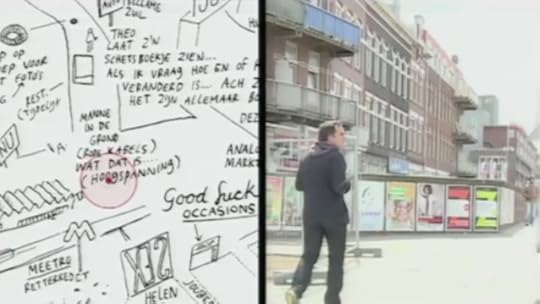
Yes, this is what we do, some of us. And I was feeling very good to have discovered a fellow-traveler, and one that was a new name to me, but then – knock me down with a feather – it clicked and I suddenly realized I haveseen his work before, and that the two of us can be found between the covers of this book, edited by the very wonderful Katharine Harmon.
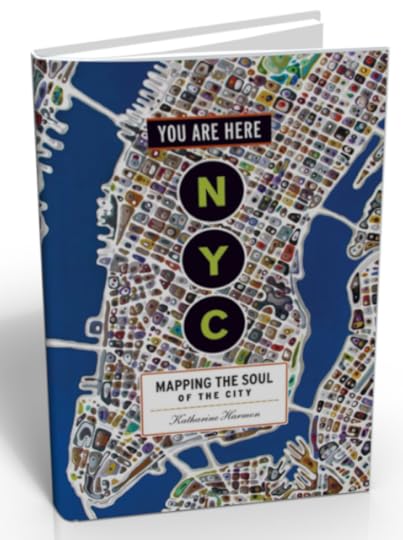
It’s a small world, unless you decided to walk it all.


Not only that, the walls had wallpaper based on drawings from the book. As an occasional map obsessive this sounds like a fine idea to me. What could make it finer? Why the appearance of Nicholson. I'm not absolutely sure if I'm on the walls, but definitely in the book. Rothuizen bought a copy of my Lost Art of Walking - it says so!!


I can hardly tell you how chuffed I am by this. Writers are simple creatures. We toil in melancholy darkness, and very small things can sometimes make us very happy, and this is absolutely one of them. Thanks to David and to the hotel, and even more to Jan Rothuizen.

Naturally I did some research. Rothuizen is everywhere, not only in Amsterdam, Tokyo, Colombia, drawing, map-making and walking, but also in London where he had a rat thrown at him. I know this after watching a TED talk he did (available online) in which he talks about walking in New York, “This has to do with the hierarchy of information like I would see things, think about memories, I would hear songs, there were a lot of different things going on at the same time and I thought this was very worthwhile but also very rich.”

Yes, this is what we do, some of us. And I was feeling very good to have discovered a fellow-traveler, and one that was a new name to me, but then – knock me down with a feather – it clicked and I suddenly realized I haveseen his work before, and that the two of us can be found between the covers of this book, edited by the very wonderful Katharine Harmon.

It’s a small world, unless you decided to walk it all.

Published on April 16, 2019 03:19
Geoff Nicholson's Blog
- Geoff Nicholson's profile
- 55 followers
Geoff Nicholson isn't a Goodreads Author
(yet),
but they
do have a blog,
so here are some recent posts imported from
their feed.


